
What is Sciatica and Can Physical Therapy Help?
1 CommentThe sciatic nerve is a large nerve comprised of smaller nerves that originate in the low lumbar and sacral regions of the spine. The sciatic nerve starts in the low back, travels through the buttock, and into the back of your leg. It has branches that travel all the way to the foot. Sciatic symptoms may include pain, numbness, tingling, cramping, burning and weakness in the muscles of the affected leg. There are many reasons why the sciatic nerve may be symptomatic including a herniated disc, narrowing of the nerve space in the spine, or tightness in hip muscles.
What Can Physical Therapy Do?
It has been shown that back pain with sciatica is more likely to improve after early physical therapy. One study led by researchers at University of Utah Health showed that patients with sciatica who were treated with four weeks of physical therapy experienced less disability in the year following their initial doctor’s visit than patients who followed the usual wait-and-see approach.1
A physical therapist has training to help evaluate your symptoms to determine the causes. Once the physical therapist has evaluated you, they can begin to help you feel better by treating your symptoms. Many therapists use manual, or hands-on, techniques to help loosen tight muscles or help your joints in your spine and pelvis to move correctly. Physical therapists will also help teach you ways to strengthen your muscles to decrease the risk of recurrence of sciatic symptoms. Many of these include strengthening and stretching of the core, back and hip muscles.
Examples of How to Help Your Sciatica
- Piriformis stretch: lie on your back, cross your ankle over your opposite knee, let the knee fall out to the side until a stretch is felt in your buttock near where your back pocket would be. If you do not feel much of a stretch, you can try lifting the leg off the bed and holding behind your thigh in a position where the stretch is felt near the back pocket area.
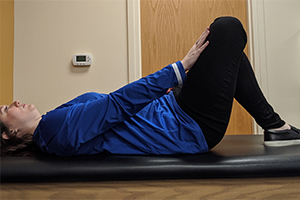
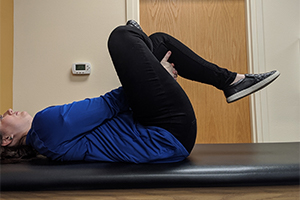
- Neutral Spine positioning: Begin by lying on your back with both knees bent. Using the muscles near your bellybutton, try to flatten your low back against the floor. You should not hold your breath and should be able to breathe comfortably.
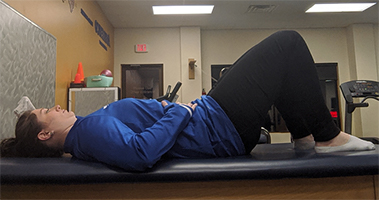
- Sciatic nerve glides: Sit on the edge of a chair with both legs bent and head looking down, kick one knee to straighten the leg while simultaneously lifting your head to look straight ahead. Only perform in comfortable range, you should feel a stretch but not sharp pain. Perform 10 repetitions multiple times per day, with one set right before bed. This stretch can be performed on both legs, however more caution should be given to the more symptomatic leg to avoid extreme aggravation.
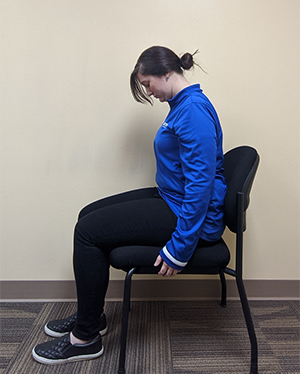
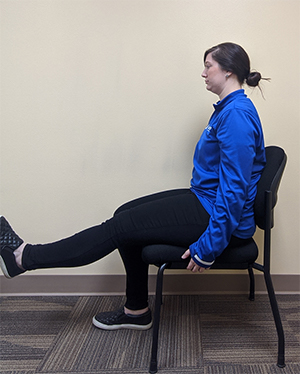
If you are suffering from sciatica symptoms, find your closest Athletico clinic and schedule a free assessment to meet with a physical therapist so our experts can begin to help your feel better. Athletico is now offering appointments in-clinic or virtually through telehealth.
Physical therapy is usually the thing you are told to do after medication, x-rays or surgery. The best way to fix your pain is to start where you normally finish – with physical therapy at Athletico. Schedule a free assessment in-clinic or virtually through a secure online video chat where our team can assess your pain and provide recommended treatment options.
The Athletico blog is an educational resource written by Athletico employees. Athletico bloggers are licensed professionals who abide by the code of ethics outlined by their respective professional associations. The content published in blog posts represents the opinion of the individual author based on their expertise and experience. The content provided in this blog is for informational purposes only, does not constitute medical advice and should not be relied on for making personal health decisions.
References:
l. Therapy.” Medical Press, 6 Oct. 2020, medicalxpress-com.cdn.ampproject.org/c/s/medicalxpress.com/news/2020-10-early-referral-physical-therapy-function.amp.

1 Comment
James Rohrbach
1. I have chronic pain down the backs of both hamstrings which keep me from walking pain-free. I have had an epidural steroid shot which has helped with lower back and hip pain but has not helped this hamstring pain.
2. Do you accept Medicare? Do I need a referral from a doctor for this?